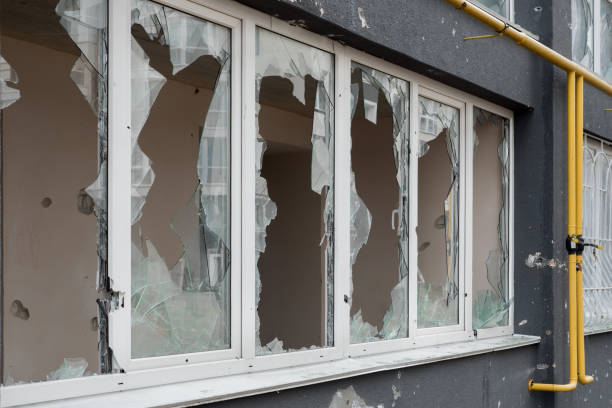Related Posts
Ugo Lord’s attorney offers insights on vandalism consequences following a video of a lady causing a pole to tumble. The attorney’s perspective adds depth to understanding the legal ramifications. It sheds light on the lady’s potential liability for damages under the destruction of property legal theory. The video prompts a closer examination of vandalism laws and their applications.
According to Lord Ugo, the pole already looked fragile, with the possibility of wind tumbling it down even if the lady had not played around with it. However, she could still be held liable for damages because of her involvement and handling of the pole unless she proved another negligent party damaged the pole first. She could also prove the city failed to properly maintain a previously damaged pole if the city knew, or should have known, that the pole was damaged.
The important take away from this video is the burden of proof shifts to this young lady to prove that another party damaged the pole first. It is no longer the city’s burden to prove, but it is her burden to prove because the pole was damaged while she was not using it for its intended purpose.
Very interesting! It means that it is not a valid defense to say that the light pole would have been permanently destroyed anyway by the wind! The question is who broke it first? And of course, as the video shows, the lady did. So, what does the video explain about the law?
Although this young lady could potentially be held liable for the destruction of property, let’s take this opportunity to discuss a hypothetical criminal matter: What if she intentionally damaged the pole? Vandalism, a terrible act that defaces property, is a serious offense under California law. Specified under California Penal Code Section 594, vandalism includes actions like hitting windows. But what constitutes vandalism? It is very important you know so we know if someone like the lady in the video is guilty of Vandalism as Lord Ugo said.
What Constitutes Vandalism?
California Penal Code Section 594 defines vandalism as maliciously defacing or destroying real or personal property that does not belong to someone. This can, therefore, be graffiti, keying cars, breaking windows, or any other act that leads to the destruction of property belonging to someone else. More importantly, the act must be deliberate meaning the culprit had the intention of causing damage.
Penalties for Vandalism Consequences
The penalties for vandalism in California vary based on the kind of damage and the value of the property destroyed. Vandalism is either a tagged felony or a misdemeanor.
For misdemeanor vandalism
– Damage less than $400: Up to one year in county jail or a fine of up to $1,000.
– Damage $400 or more: Up to one year in county jail or a fine of up to $10,000.
For felony vandalism
– Damage $400 or more: Up to one year in county jail or 16 months to 3 years in state prison and/or a fine of up to $10,000.
Also, individuals convicted of vandalism may be made to pay restitution to the property owner for the cost of repairs.
Defenses Against Vandalism Consequences And Charges
If the lady in the video can seek the services of a lawyer, there are other potential defenses that she can put up.
There are several potential defenses against vandalism charges in California, including:
1. Lack of intent: If the defendant can show that they had no intention to damage the property, they may have a viable defense against vandalism charges.
2. False accusations: Sometimes, one may be wrongly accused of vandalism. Providing proof of an alibi or witnesses who can attest to the defendant’s whereabouts during the alleged offense can support this defense.
3. Consent: If the property owner consented to the defendant’s actions, such as creating graffiti art on their property, this may serve as a defense against vandalism charges.
It’s vital to know that each case is peculiar, and the validity of these defenses relies on the unique scenario surrounding the alleged offense.
Vandalism Consequences Beyond Legal Penalties
Beyond the legal penalties outlined in California’s Penal Code, vandalism can have severe consequences for culprits. Apart from criminal charges, individuals convicted of vandalism are likely to face social stigma and difficulty in getting employed or even housing, which is likely to destroy relationships.

Moreover, vandalism creates a sense of insecurity and blight in communities, affecting the quality of life for residents and businesses. The expenses of repairing vandalized property also lead to a waste of taxpayers’ money.
Preventing Vandalism Consequences
Prevention is key to reducing instances of vandalism in communities. Some strategies for preventing vandalism include:
– Improved surveillance and security in areas prone to vandalism especially violent neighborhoods.
- By sensitizing community members on the need to avoid violent behavior and destruction of public properties.
- Repairing vandalized properties before legal action is taken.
Addressing the main causes of vandalism and promoting a sense of ownership and pride in communities, it is possible to limit behaviors like this.
Conclusion
Vandalism is a serious offense under California law, carrying significant legal consequences for those convicted. Understanding the definition of vandalism, the potential penalties involved, and available defenses is crucial for anyone facing vandalism charges.
Furthermore, taking proactive steps to prevent vandalism and promote community cohesion can help create safer, more vibrant neighborhoods for everyone. By working together to combat vandalism, we can contribute to a more positive and thriving society for generations to come.
